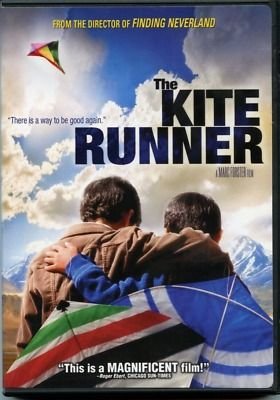Book Details
Published in 2003, The Kite Runner by Khaled Hosseini is a moving drama novel that is backdropped by the historical unstable nature of Afghanistan. The novel gives the story of a privileged Pashtun boy Amir living in Kabul and his loyal friend Hassan, son of a servant whose childhood friendship is challenged by betrayal, guilt and the trends of separation in society. Stretching over 30 years, the novel follows the path of redemption of Amir to face his previous deeds in the wake of Afghanistan through the various political regimes in the country, such as Soviets and Taliban dominance. The lyricism of the prose and the emotional reach touch on themes of friendship, family, redemption, and the long-lived effects of trauma.
The first half of the novel is about the kite-flying days of Amir and Hassan in Kabul when a terrible development shatters their friendship. The second part takes up the story after Amir goes to America and shows life as an immigrant in America and subsequent journey to a war-torn Afghanistan to repay his debts. The book is rich in cultural details and intertwines personal drama with the history of the place, giving an insight into the life of Afghanistan, and the immigrant life. Its raw nature that talks of guilt and forgiveness struck a chord all around the world and this made it a contemporary classic.
- Author: Khaled Hosseini, Afghan-American novelist and physician.
- Genre: Drama, Historical Fiction, Literary Fiction.
- Word Count: ~107,000 (standalone novel).
- Global Sales: Over 31 million copies sold, translated into 60 languages.
Book Overview (U.S. hardcover edition):
| Title | Year | Pages | Key Plot Focus |
|---|---|---|---|
| The Kite Runner | 2003 | 371 | Amir’s journey from betrayal in Kabul to redemption in adulthood. |
Hosseini , who is an Iran-born American pediatrician, published her first book to considerable success, due to its tenderness and realism. It was successful, and subsequently followed by a second book, *A Thousand Splendid Suns*, and solidified his work as the creator of strikingly human and deeply Afghan dramas.

Adaptation Details
The Kite Runner (2007), a film by Marc Forster based on the novel by Hosseini, aims to visually render the stories of the Kites Runner in the most poetic way. Starring Khalid Abdalla as grown-up Amir, Zekeria Ebrahimi as child Amir, and Ahmad Khan Mahmoodzada as child Hassan, the film beautifully reflects the settings of Afghanistan and has a dark score by Alberto Iglesias, reflecting the heart wrenching story of the novel. Boasting exquisite kite flying scenes shot in the Xinjiang province of China (which acts as Afghanistan in the film version) and the stark, bleak scenes of war, the film version echos the novel in its shifting moods. It largely follows the novel vis-a-vis the plot but reduces certain aspects in order to make the film of a certain duration.
This film traces the lives of Amir and Hassan during their childhood in Kabul, the event that sealed the two men, the betrayal, and how Amir sets out to redeem himself in Afghanistan, which is controlled by Taliban. It is both a personal play and a historical one, in which the emotional issues of friendship and redemption are given their due weight. The movie faces some difficulties in the visual representation of the graphic moments of the novel, but it does not harm its emotional storytelling as the film scored some positive feedback in terms of cultural authenticity.
- Director: Marc Forster.
- Studio: DreamWorks Pictures, Paramount Vantage.
- Release Date: December 14, 2007.
- Runtime: 128 minutes.
Key Cast:
| Character | Actor/Actress | Role Highlights |
|---|---|---|
| Amir | Khalid Abdalla | Haunted protagonist seeking redemption. |
| Hassan | Ahmad Khan Mahmoodzada | Loyal friend facing prejudice and tragedy. |
| Baba | Homayoun Ershadi | Amir’s proud, principled father. |
| Sohrab | Ali Danish Bakhtyari | Hassan’s son, key to Amir’s atonement. |
Reception: The film collected over 73 million dollars in the world and rated 65 percent on Rotten Tomatoes, which appreciated the emotional sense and beauty of the visual impact and criticized by some of reviewers as softening the harshness of the book. It was a golden globe nomination in the Best Foreign Language Film. Budget: 20 million dollars, shot in Kashgar, China, as the scenes of Kabul, and the cultural advisors had to make sure it was kept accurate.

Comparisons
Spoiler Warning: Minor plot hints below.
The 2007 movie adapts the novel deeply and presents the emotional essence and important events of the story and leaves out the historical and cultural complexity that the book possesses to adapt to a two-hour timeline, which is less introspective with a greater emphasis on small moments of visual presentation and drama.
- Similarities:
- Core Plot: The basic storyline of friendship of Amir and Hassan, betrayal, and redemption of Amir has remained intact, along with significant scenes of flying a kite and saving Hassan.
- Characters: The theme of guilt in Amir, loyalty in Hassan and pride in Baba are reflected in the novel.
- Theme: Include friendship, redemption and the effects of divisions in society.
- Differences:
- Book: Better historical background (e.g. Soviet invasion, Afghan diaspora); description of inner guilt of Amir; Traumatic experience is portrayed more graphically.
- Film: Water-downs the historical background; make violent moments to be less gruesome to a larger audience; removes subtle characters and plots (Life of Amir in America)
- Tone: Book is self-examining and literary; film is more emotive and theater-like in its rhythms.
Why It Works: The movie adapts the touching tale of the novel with realistic imagery and excellent acting in order to help the world understand the culture of Afghanistan. Book readers can be frustrated at the loss of greater depth, but the movie stands out as being very heartfelt and culturally true.
Trivia & Resources
- Trivia:
The film was met with controversy in Afghanistan because of the sensitive scenes the young actors had to go into self-exile in order to be safe.- Cultural contribution was done in the kite-flying scenes to depict the traditions of the Afghans.
- Hosseini acted as a consultant to the film, seeing to it that the film is true to the spirit of the
- Resources:
- Buy the book on Amazon.
- Stream the film on Amazon Prime or Netflix.
